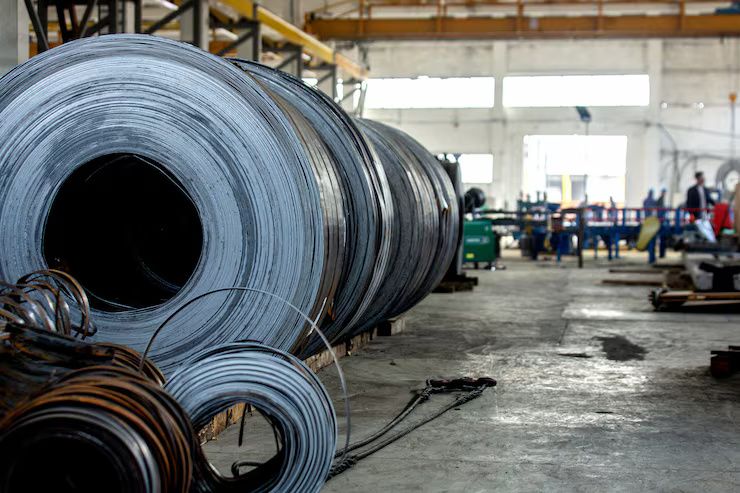Cable manufacturing is the industrial process of designing, producing, and assembling electrical, optical, or hybrid cables that transmit power, data, or signals. These cables are essential in sectors such as telecommunications, construction, energy, automotive, aerospace, and consumer electronics.
Cables are made from materials like copper, aluminum, fiber optics, and various insulating polymers. The process involves several steps, including wire drawing, stranding, insulation, cabling, shielding, and jacketing. Each step ensures the cable performs reliably under various environmental and operational conditions.
This topic exists because cable technology plays a foundational role in connecting power systems, enabling communication, and supporting digital infrastructure globally. As demand for faster, safer, and more sustainable connections grows, understanding how cables are manufactured and how the industry is evolving has become essential.
Why Cable Manufacturing Matters Today
The importance of cable manufacturing continues to grow due to modern dependence on connectivity, electrification, and infrastructure expansion.
-
Power and Energy: With the global shift toward renewable energy sources like wind and solar, high-voltage cables are needed to transmit power efficiently over long distances.
-
Telecommunications: Fiber-optic cables are critical to support 5G networks and fast internet access in both urban and rural regions.
-
Construction and Smart Cities: Infrastructure projects rely on low-voltage and control cables for lighting, HVAC systems, and safety networks.
-
Automotive and EVs: Electric vehicles require specialized cables for batteries, charging systems, and in-vehicle electronics.
-
Data Centers: As cloud computing grows, data centers depend on high-performance cables for fast, secure data transfer.
Cable manufacturing affects manufacturers, utility providers, governments, engineers, and consumers. Poor-quality cables can lead to safety hazards, power outages, or communication failures. Therefore, high-quality cable production is not only a technical concern—it’s a matter of public and commercial safety.
Recent Trends and Developments in Cable Manufacturing
The cable industry has evolved rapidly in recent years, responding to global demand for greener, faster, and more efficient solutions. Key trends and updates include:
-
Sustainability Initiatives (2024–2025): Manufacturers are increasingly using recyclable materials, halogen-free flame-retardant compounds, and water-based coatings to reduce environmental impact. Companies are also working to lower emissions during production and adopt circular economy practices.
-
Smart Cable Technologies: Advanced cables now come with embedded sensors that monitor temperature, stress, and wear in real-time, reducing maintenance costs and improving reliability.
-
Increased Fiber Optic Cable Production: According to a 2024 market report, global demand for fiber-optic cables increased by over 12% due to the rollout of 5G and fiber-to-home infrastructure in Asia, Europe, and North America.
-
Automation and Industry 4.0: Cable factories are adopting automated wire-drawing machines, robotic extrusion lines, and real-time quality control systems using AI and machine vision.
-
Global Supply Chain Shifts: Due to geopolitical shifts and rising raw material costs in 2023–2024, some manufacturers are reshoring production or seeking alternative suppliers for copper and rare materials.
The industry's focus is not just on production volume but on intelligent, sustainable, and secure cable systems that support modern infrastructure.
Regulations and Compliance in Cable Manufacturing
Cable manufacturing is closely regulated to ensure product safety, environmental responsibility, and industry standards. Key regulations and policies include:
-
International Standards: Organizations like the International Electrotechnical Commission (IEC) and Underwriters Laboratories (UL) define technical specifications for cables, including flame resistance, mechanical strength, and thermal stability.
-
REACH and RoHS: In Europe, the Registration, Evaluation, Authorization and Restriction of Chemicals (REACH) and Restriction of Hazardous Substances (RoHS) directives limit the use of toxic substances in cable insulation and jacketing materials.
-
Bureau of Indian Standards (BIS): In India, cable products must comply with IS (Indian Standards) specifications, including IS 694 for domestic wires and IS 7098 for power cables.
-
Building Codes: Many countries’ electrical and fire safety codes regulate the use of specific cable types in construction.
-
Cybersecurity Regulations: For data cables used in sensitive networks, some jurisdictions enforce compliance with secure data transmission protocols.
Manufacturers must comply with these legal frameworks to market their products locally or internationally. Failure to meet compliance can lead to product recalls, import bans, or liability claims.
Tools and Resources for Understanding and Managing Cable Production
Whether you're a student, engineer, or infrastructure planner, several tools and resources can help you better understand cable manufacturing:
Technical Resources:
-
Cable Sizing Calculators: Tools like Eaton’s Cable Sizer or Schneider Electric’s Electrical Calculation Tools help determine appropriate cable types and cross-sections for specific loads.
-
Material Databases: Platforms such as Matmatch or Total Materia allow users to explore cable insulation and conductor properties.
-
Simulation Software:
-
COMSOL Multiphysics – Simulates electrical, mechanical, and thermal properties of cable assemblies.
-
ANSYS – Used for electromagnetic modeling in high-voltage cable systems.
-
Certifications and Testing Services:
| Organization | Purpose |
|---|---|
| UL (USA) | Safety testing and certification |
| VDE (Germany) | Compliance with European standards |
| CSA (Canada) | Performance validation for North America |
Learning Platforms:
-
IEEE Xplore – Research papers on cable design and technology
-
Coursera & edX – Offer courses in electrical engineering and industrial automation
-
YouTube Channels – Like The Engineering Mindset and Electrician U for visual tutorials
These tools support professionals, manufacturers, and students in planning, designing, and analyzing cable systems effectively.
Frequently Asked Questions (FAQs)
What are the main materials used in cable manufacturing?
The primary materials include copper and aluminum for conductors, polyethylene or PVC for insulation, and steel or braided copper for shielding. Fiber-optic cables use glass or plastic fibers.
What’s the difference between low-voltage and high-voltage cables?
Low-voltage cables (typically below 1,000 volts) are used in homes and buildings, while high-voltage cables (above 1,000 volts) are designed for power transmission across long distances or industrial use.
How are cables tested before delivery?
Cables undergo electrical, mechanical, and environmental testing. This includes insulation resistance tests, tensile strength tests, flame-retardancy checks, and high-voltage withstand testing.
Why are fiber-optic cables preferred over copper for data?
Fiber-optic cables offer higher bandwidth, longer transmission distances, and immunity to electromagnetic interference, making them ideal for high-speed internet and communication networks.
What affects the cost of cable manufacturing?
Costs depend on raw material prices (especially copper), manufacturing complexity, required certifications, and customization needs like shielding or waterproofing.
Conclusion
Cable manufacturing is a dynamic, essential industry that powers the world's infrastructure, communications, and technologies. From everyday household wiring to massive energy projects and global data networks, cables form the hidden backbone of modern civilization.
Understanding how cables are made, the materials used, current trends, and applicable regulations allows for better decisions in construction, engineering, telecommunications, and industrial planning. With ongoing innovation in sustainability, smart monitoring, and automation, the future of cable manufacturing looks both efficient and environmentally responsible.
Whether you're exploring the field for education or decision-making, the tools, updates, and resources available today make it easier than ever to grasp this critical industry.

